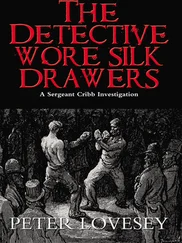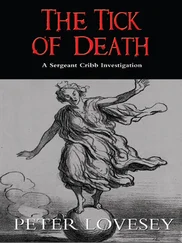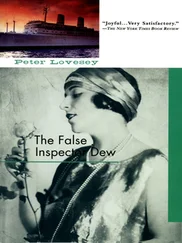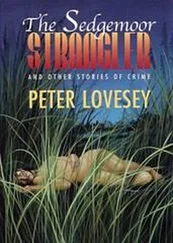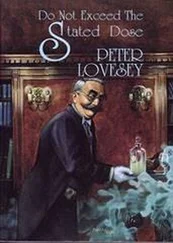Mindful of his parking error at the golf club, he picked a bay well away from the main entrance and walked back, pausing only to buff his toecaps on the backs of his trousers. His appointment was with a civilian whose name on the phone had sounded like Hidden Camera. It turned out to be Haydn Cameron. But cameras hidden and visible are at Bramshill in plenty. This academy for top policemen is more secure than the average prison. Someone had watched him polish his shoes.
Inside, he gave his name and was directed to the National Crime Faculty. It sounds like a college for crooks, he thought. What names these desk detectives dream up. He stepped through the Great Hall, panelled from floor to ceiling, into a waiting area where, if he felt so inclined, he could leaf through the latest Police Review , or The Times . Nothing so subversive as the Guardian.
His spirits improved when a bright-eyed young woman with flame-coloured hair came in, asked him his name and invited him upstairs, that is, up the exquisitely carved stairs. On the way she told him that the staircase had been built in the reign of Charles II, adding with a bit of a giggle that it didn’t belong to Bramshill. It had been plundered from some other mansion during the nineteenth century. He smiled at that. She was doing her best to put him at ease, and a pleasing thought crossed his mind. “Your name isn’t Heidi, by any chance?”
She looked puzzled and shook her head.
“I thought I might have misheard it,” he said. “Heidi Cameron?”
“Sorry. No.”
“Or is Haydn one of these unisex names?”
She was highly amused. “Now I know what you’re on about, and you’ve got to be joking. I’m not going to interview you. I’m just the gofer here.”
Wishful thinking. He was shown into the office of an overweight, middle-aged man with a black eye-patch and hair tinted boot-polish brown. The charming gofer went. And closed the door on them.
“What’s it like out there?” the real Haydn Cameron asked, as if he never left the office.
“Not so bad,” Diamond answered.
“Good journey?”
He tried an ice-breaker. “The last part was the best.”
“Oh?”
“Following the young lady upstairs.”
It hadn’t broken the ice here. “I don’t have a great deal of time, superintendent.” Cameron spoke Diamond’s rank as if it was an insult. Probably was, in this place.
“Let’s get to it, then.”
He got a sharp look for that. What did the man expect? Yes, sir, no, sir? He was just a civilian.
“We run regular courses on how to conduct murder enquiries for SIOs such as yourself. According to my records you haven’t attended one.”
The old blood pressure rose several notches and this wasn’t a good moment to have a coronary. Calm down and speak to the pompous prat in his own language, he told himself. “No, I haven’t found a window of opportunity yet.”
That was met with a glare. “All the courses are oversubscribed,” Cameron said with pride.
“That could be why you haven’t seen me, then.”
“You could go on the waiting list.”
There was a dangerous lack of contact here. Diamond tried not to curl his lip. “The list that interests me is the approved list of offender profilers.”
“Oh?”
“I was told you deal with it. Each request for assistance goes through your office.”
Everyone in the police knew why the list was centrally controlled. After psychological offender profiling burst into the headlines in January 1988 following the conviction of John Duffy, the serial rapist and killer, forces up and down the country had turned to psychologists for help in tracking down serial offenders. Not all of the so-called experts were up to the challenge. A top-level decision had been made to oversee the use of profilers.
Personally, Diamond had never consulted a profiler. This wasn’t from any prejudice, but simply because the cases he’d investigated weren’t serial crimes in the usual sense of the term.
“But I understood from your call,” Cameron said, “that this isn’t a routine request.”
“Right,” Diamond responded. “It’s about the murder of one of the profilers on your list, Dr Emma Tysoe.”
“Which is why I made an exception and agreed to meet you. We’re not unaware of the case.”
“Did you meet her personally?”
“Yes, several times,” Cameron said. “Everyone we approve has been vetted.” He glanced at his notes. “Dr Tysoe has been on the list since February nineteen ninety-nine. She worked on five inquiries.”
“I heard she was good at it.”
“Exceptionally good.”
“Do you mind telling me how it works? When an SIO asks you to recommend someone, do you look at your list and choose a name?”
“It isn’t just a matter of seeing who is available,” Cameron said acidly. “The matching of the profiler to the case is far from simple. All kinds of criteria come into play.”
“Such as where they live?”
Not a good suggestion. Diamond got a basilisk stare from the seeing eye. “That’s of trifling importance. You really ought to do the course.”
This was not a comfortable interview. “You mentioned all kinds of criteria,” Diamond prompted him.
Cameron braced himself with a wriggle of the shoulders and a tilt of the chin and started again. “The term psychological offender profiler is a useful label, but I have to point out that it includes several different types of expert. There are currently twenty-six on my list-twenty-five, now, unfortunately-and if you asked each of them to provide a job description you’d get twenty-five different answers. Some stress the statistical element and others the clinical. There are those who like to be detached about the whole business and those who involve themselves closely with the police team. Those who use strict scientific methodology and those who are more intuitive.”
“How did you class Emma Tysoe?”
“She was one of the latter.”
“Intuitive?”
Cameron sighed and rolled the eye. “I thought you’d jump on that word. It gives the impression of guesswork.”
“I didn’t take it that way.”
A better response, it seemed. A note of conciliation, if not approval, crept into the conversation. “All right. She was a psychologist, as you know, not a psychiatrist, not medically trained. Her approach was more theoretical than hands-on. But it was based on a remarkable understanding of the criminal mind. I’ve heard from officers who worked with her that she somehow immersed herself in the thinking of the offender and predicted what would happen next, and very often where, and when.”
“That’s the intuitive part?”
“Yes, but only as a result of minute observation of all the data from the previous crimes. To give you an example, she assisted on a case of serial rape in North Wales. The attacks were spread over a long period, about six or seven years, and the local force were getting nowhere. Emma Tysoe was brought in, read the statements, visited the scenes, spoke to all of the victims, including several who were stalked but not attacked. By analysing the data-and interpreting the behaviour of the rapist- she decided he had spent most of his youth in custody or institutions and lived with someone of his own sex who dominated him-his elder brother, as it turned out. She said because of the way he picked his victims it was clear he was actually in awe of women. He would spend weeks or months stalking them, but not in a threatening way, and only rarely choosing to attack them.”
“More like a Peeping Tom?”
“Not at all.”
Another wrong note.
“He was on the lookout for certain women who appeared even more submissive than he was. Dr Tysoe produced her findings, estimated the perpetrator’s age, intelligence and the type of work he would do, and it led them to a man they’d disregarded much earlier, a farm worker. Broken home, fostering, youth custody, just as she’d said. On his release he’d ended up living with the bullying brother. He confessed straight away. That’s only one example.”
Читать дальше

